Question
In: Math
Consider the random experiment of tossing two fair dice and recording the up faces. Let X...
Consider the random experiment of tossing two fair dice and recording the up faces. Let X be the sum of the two dice, and let Y be the absolute value of the difference of the two dice.
1.Compute the skewness coefficient and kurtosis of the distribution of X and Y.
2. For each of x=4,5,6 from the sample space of X do the following:
Construct the pff of the conditional distribution of X given Y = y
Compute the mean variance SD skewness coefficient snd kurtosis of the conditional distribution of Y given X = x. Are they distributional characteristics constant, or do they depend upon x?
Solutions
Expert Solution
Dear student this is a huge time consuming question.. But I did it only to help you... Your satisfaction is more important to me.. If you are satisfied Please THUMBS UP and Support me... Thanks..
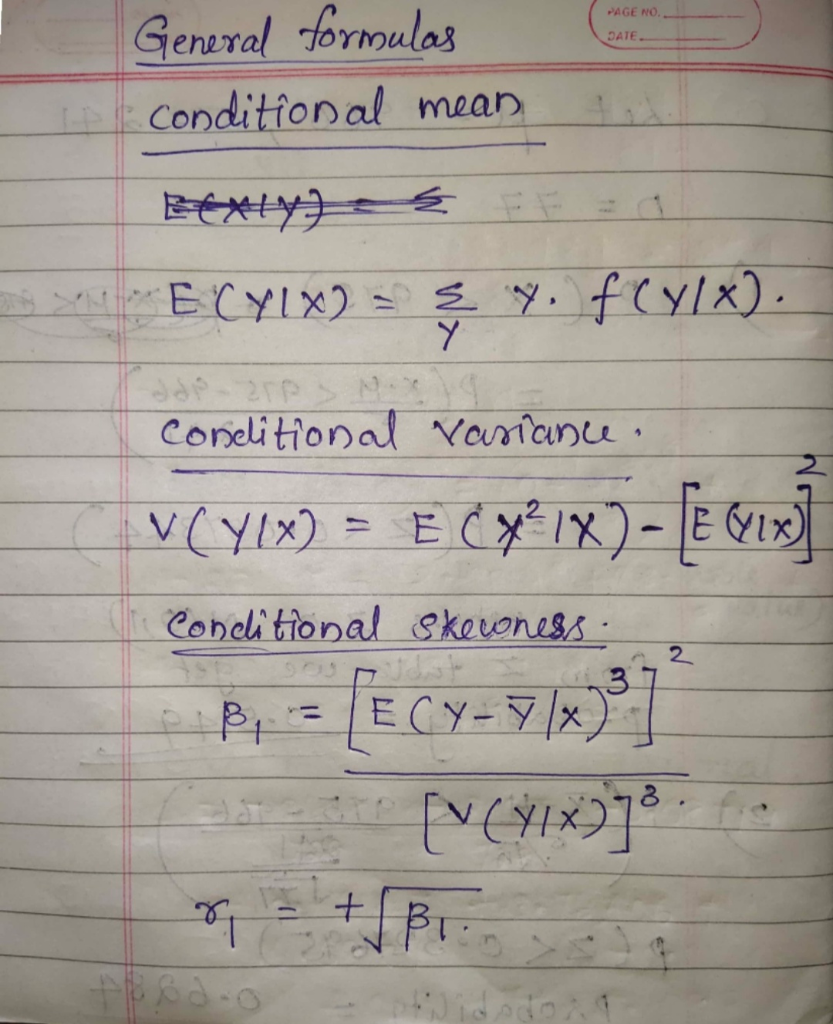

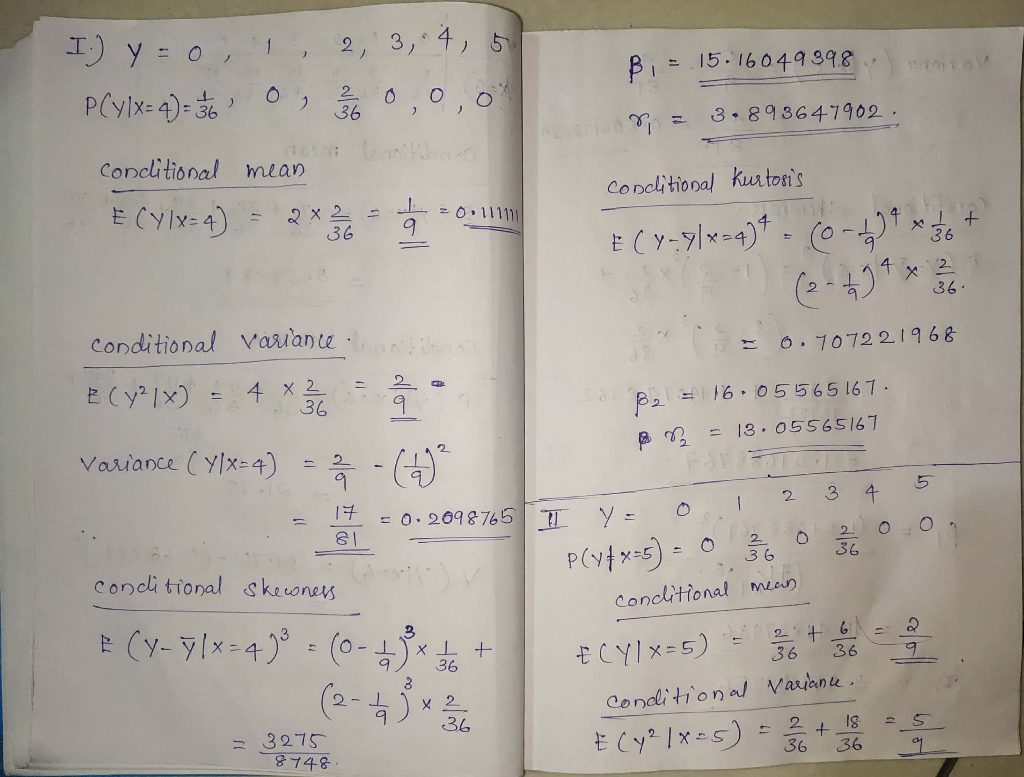
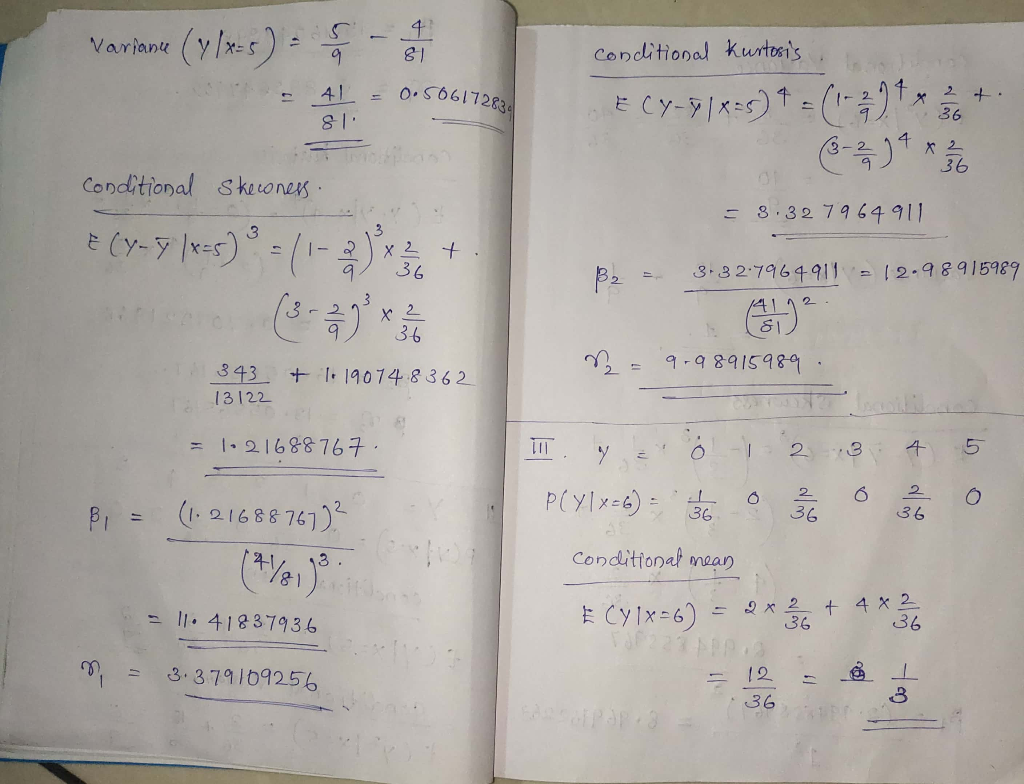
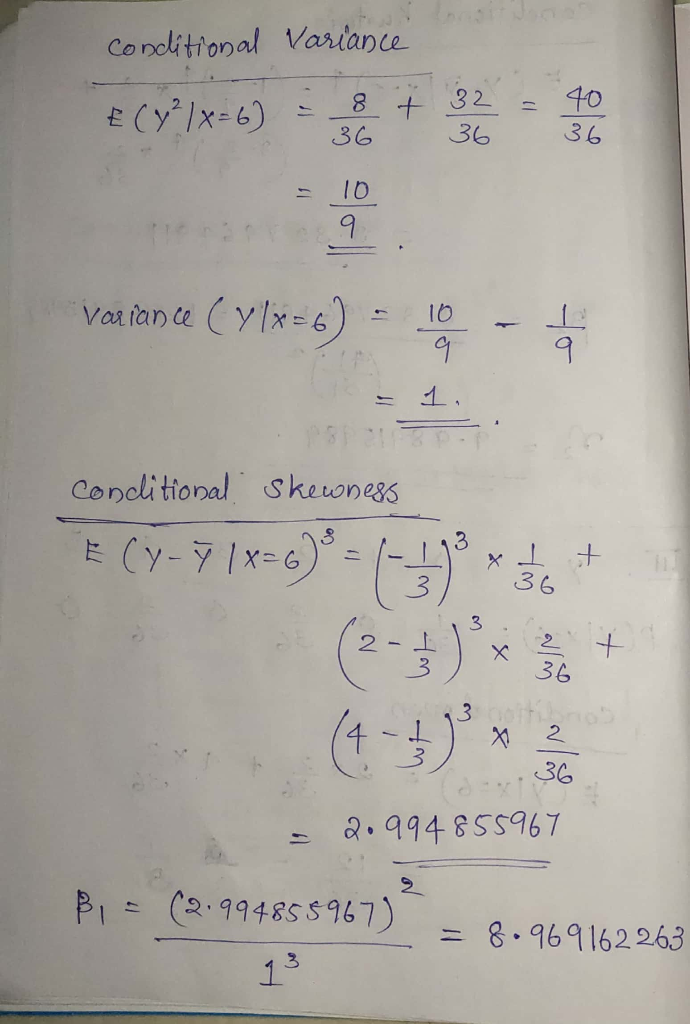
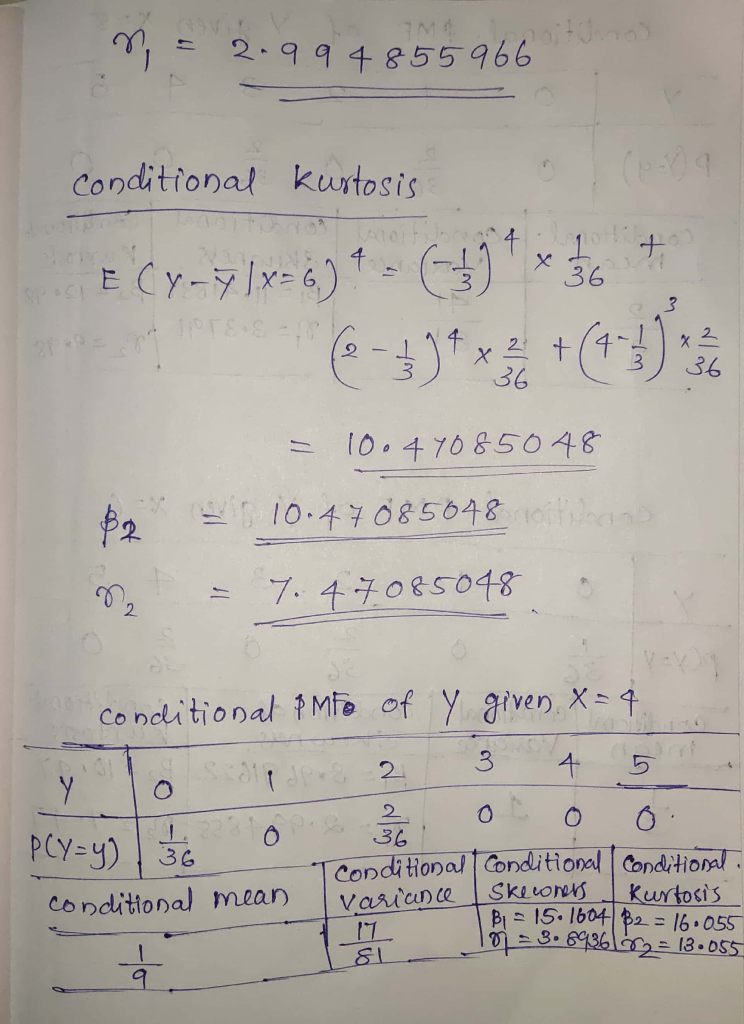
 You
can clearly see all distributional characteristics are
constant..
You
can clearly see all distributional characteristics are
constant..
Related Solutions
Let a random experiment consist of tossing two fair six sided dice. Let x be the...
Consider the experiment of tossing two dice. Your random variable is D, the square of difference...
Consider the experiment of tossing two dice. Your random variable is D, the square of difference...
Consider the experiment of tossing two dice. Your random variable is D, the square of difference...
Let X be the random variable for the sum obtained by rolling two fair dice. (1)...
Roll two fair dice. Each die has six faces. A. Let A be the event that...
suppose two dice are tossed. let x= the sum of the on the top faces of...
Consider rolling two dice and let (X, Y) be the random variable pair defined such that...
Two fair dice are rolled. Let X be the product of the number of dots that...
2. Roll a pair of unbiased dice. Let X be the maximum of the two faces...
- In C++ Please Problem 1: How to calculate a home's value Housing economists have long used...
- 1. The Ostwald process is used commercially to produce nitric acid, which is, in turn, used...
- How many + operations occur when the following pseudocode is executed? What is the output? s...
- This problem is a long one, but fairly conceptual in nature. a. For each of the...
- A particle carrying charge +q is located on the xaxis at x=+d. A particle carrying charge...
- 1. Parking Tickets – The Kaiserslautern police department claims that it issues an average of only 60...
- Write a C Unix shell script called showperm that accepts two command line parameters. The first...
 milcah answered 2 weeks ago
milcah answered 2 weeks ago